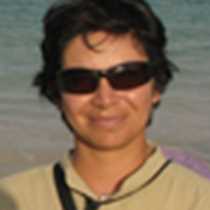Santa Cruz Island
Early in the morning we entered Academy Bay at Santa Cruz Island. This is the island where we find the Charles Darwin Research Station; it is also the island we can also find Galápagos giant tortoises.
After breakfast we began to disembark and headed to the Galápagos National Park dock, and from there we headed to the Charles Darwin Station. One of the programs the station began in the early sixties was the breeding program for Galápagos giant tortoises. After many years of doing this the National Park has taken over this project and is the responsible for the breeding center.
We observed and learned about the different aspects of the project, such as the procedure of incubation, which uses different temperatures to produce either males or females. At this center, more females are produced as it increases the chances of reproduction in the wild once they are released. Juveniles will be released at approximately the age of four on the island of their parent’s origin.
Once we left the station we headed towards the town of Puerto Ayora and later on to the highlands; there we stopped by a sugar cane press and coffee shop; here we found the way the locals grow their organic coffee and how to process sugar cane for alcohol and brown sugar.
One of the things we did before lunch was to explore a lava tunnel. These are formed during volcanic eruptions, as the lava flow cools on the surface, it forms a crust that insulates hot molten rock underneath; when the eruption is over we have these caves formed where long ago a hot lava flowed under that first crust. We now can say we have seen Galápagos above and under the ground.
After lunch in a local restaurant we took our buses to the highlands to look for Galápagos giant tortoises in the wild and found several. Some of these animals were resting while others were peacefully grazing on the vegetation that grows here. We completed our afternoon by going to a forest of giant daisies; these trees only grow in Galápagos and surround a couple of geological formations known as The Gemelos; these formations are pit craters formed by collapse.
We finished this day and returned to the ship for recap time and to enjoy local music.




